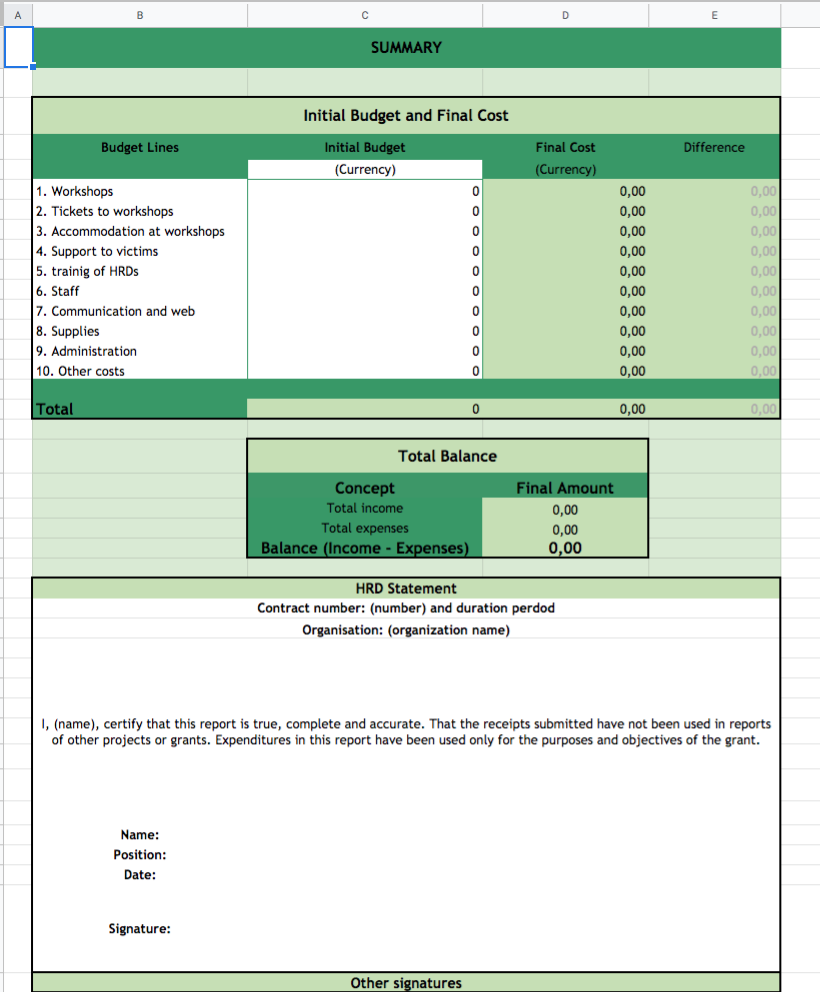Smart Accounting for Human Rights Defenders 3.0

About a year and a half ago, in Civil Rights Defenders we developed and accounting tool that would make financial reporting much easier for our partners. Many of the organisations we work with are based in countries were governments try their best to prevent them from receiving and managing any funds.
In short, Human Rights organisations are often illegal, and having a bank account, bookkeeping, hiring an auditor or even working in a safe office is a distant reality for many of our partners. Administering funds is often a difficult and dangerous task. That is the reason we developed Books and Numbers a couple of years ago, which is a tool that is meant to make accounting easy and adaptable to these circumstances. The basic idea is that our partners share their accounting with us as funders, so that we can help out when necessary, and have the possibility to continuously audit their accounts.
However, there were some challenging aspects that were left unresolved, and we detected some other faults in the accounting tool that could be revised. The last had mostly to do with making Books and Numbers more intuitive and easier to use.
Therefore, we present you with Books and Numbers 3.0. You can explore the new versions, both in English and Spanish. In this article, we will be briefly explaining the major changes and further challenges. If you are interested in knowing all the new features in detail, we recommend reading the Books and Numbers 3.0 instructions (English and Spanish version).
The accounting system continues to be based on Google Drive, which has proven to be a really useful tool when working with our partners abroad. The main improvements focused on the essentials and making the tool user-friendly.
The previous version had several tabs: Summary, Income, and one per Expenditure Classification. This meant that, depending on the number of expenditure classifications, the Spreadsheet could have up to twelve different tabs. Taking into consideration that most of our partners use Books and Numbers within their mobile phones, navigating through the tabs showed slightly unpractical.

Some general updates have also been introduced, like cell protection and intuitive use. For instance, cells that are not meant to be edited by partners are now blocked. Those changes can be seen in the Income tab, where no other modifications have been done. Major modifications have been introduced regarding Expenditures, now united in a single tab. Regarding the Summary tab, we introduced some spaces for the Auditor and the Intermediary Organisation, in case there is any, to sign the document once the accounting period is over.

We have also done some research on tools we could use once the accounting period is over, as signatures and validations are often requested by donors. Google Drive add-on’s like SignRequest seem to fit our necessities: it is easy to install, is accessible by right-clicking on the document and the data’s security is ensured by several certifications, such as ISO 27001, encryption and safe storage. If you want to check our Pros and Cons document on SignRequest for HRD Accounting systems, you can check it up here. However, we are still researching other possibilities and we are open to all suggestions on the matter.

There are some challenges which remained unresolved.
The main concern is regarding the use of different currencies. Since our office is Stockholm based, our reporting is done in Swedish kronor. Our partners mostly use their local currencies for their expenses, but they also often use a third currency, usually dollars or euros. Accounting on a three-currency system produces some small imbalances that we would like to sort out.
So far, an “alternative currency” and “exchange rate used” columns have been introduced in the Expenses Tab, which are optional to use. Partners can write down the amount of the expense in their national currency, and later transfer it to kronor. Partners can also note down the exchange rate used. Although we expect this mechanism to temporarily solve the problem, we are open to any suggestions that might involve a more practical solution.
Getting back to our last article, we practically solved all the challenges that we had pointed out as unresolved. However, the routine to follow if a partner is arrested has not been defined yet. Therefore, we welcome any suggestions you may have, especially if your organisation has faced similar challenges.
We hope you find this article useful, and we are looking forward to your comments and contributions.


